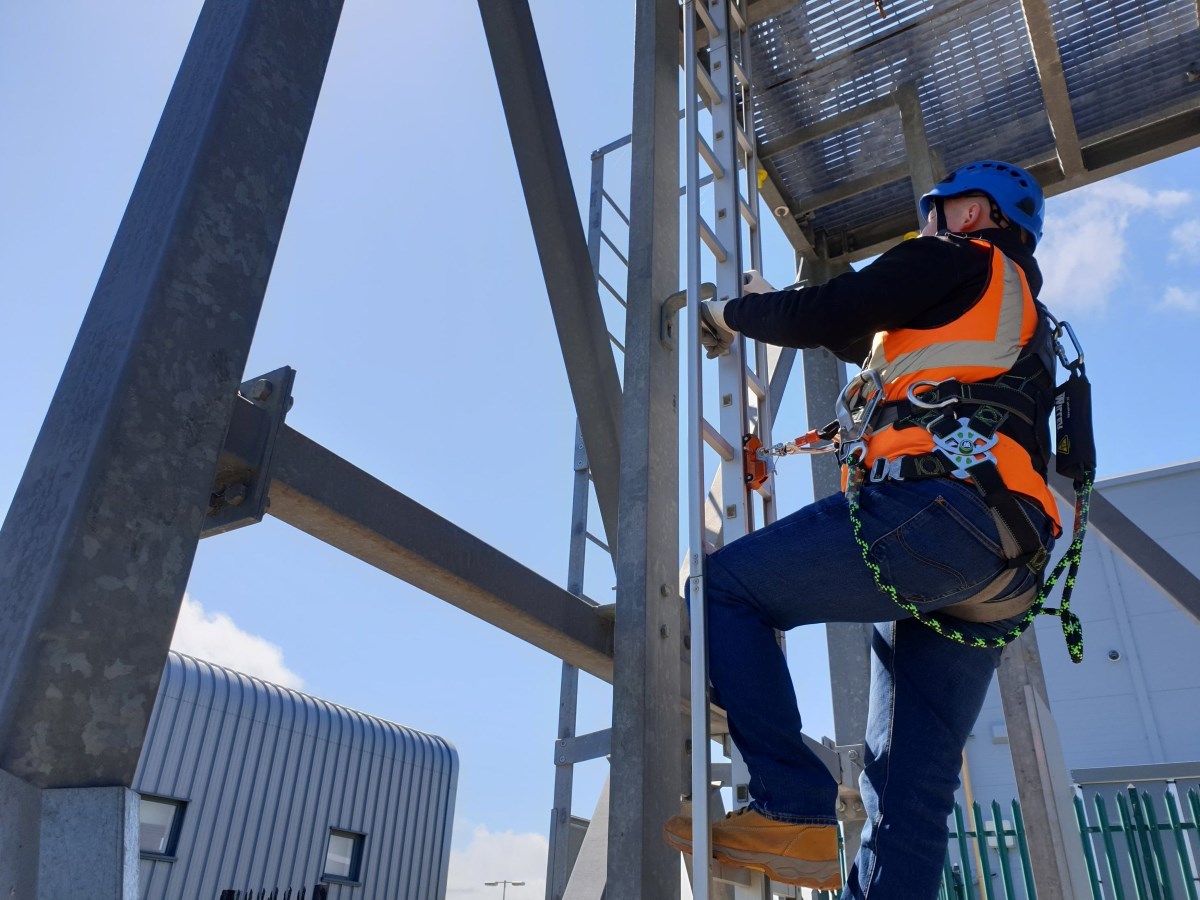

Articles
When Is Fall Protection Required On A Ladder
Modified: May 6, 2024
Learn when fall protection is required on a ladder and discover helpful articles on ladder safety and protection measures.
(Many of the links in this article redirect to a specific reviewed product. Your purchase of these products through affiliate links helps to generate commission for Storables.com, at no extra cost. Learn more)
Introduction
Fall protection is a crucial aspect of workplace safety, especially when working at heights. In various industries, ladders are commonly used for tasks such as maintenance, construction, and painting. However, working on a ladder can be inherently risky, and the need for fall protection becomes paramount to prevent accidents and injuries.
In this article, we will explore the requirements and regulations surrounding fall protection on ladders. We will delve into the guidelines set forth by the Occupational Safety and Health Administration (OSHA) in the United States, as well as best practices to ensure safety when working on ladders.
Understanding the significance of fall protection on ladders is crucial for both employers and workers. By implementing proper safety measures and adhering to regulations, it is possible to minimize the risk of falls and protect the well-being of workers.
Join us as we dive into the world of fall protection on ladders and explore the necessary steps to promote a safe working environment for everyone involved.
Key Takeaways:
- Fall protection on ladders is required at heights of 24 feet or more, and employers must provide guardrails, personal fall arrest systems, or equivalent measures to ensure worker safety and comply with OSHA regulations.
- Employers should prioritize comprehensive training, proper equipment usage, and a safety-first culture to prevent common fall hazards on ladders. By fostering accountability and promoting best practices, a safer work environment can be achieved.
Read more: When Is A Ladder Required In An Excavation
Definition of Fall Protection
Fall protection refers to a series of preventive measures and equipment used to mitigate the risks associated with falls from heights. It encompasses a range of strategies implemented to protect workers who may be exposed to potential falls, including those working on ladders.
The primary objective of fall protection is to minimize the likelihood and severity of injuries resulting from falls. This includes both falls from elevated platforms or ledges, as well as falls from ladders, scaffolds, or other elevated surfaces.
Fall protection systems typically consist of a combination of engineering controls, administrative controls, and personal protective equipment (PPE). Engineering controls involve the use of physical barriers and structures, such as guardrails, safety nets, or barricades to prevent falls. Administrative controls include effective work practices, signage, and training to ensure that workers follow proper safety procedures. PPE, on the other hand, comprises equipment such as harnesses, lanyards, and anchor points that are worn or used by workers to arrest falls or protect them in the event of a fall.
It’s important to note that fall protection is not limited to just preventing falls; it also encompasses protection from falling objects or debris. This may involve the use of helmets, hard hats, or toe guards to safeguard workers from potential head injuries.
By implementing a comprehensive fall protection plan, employers can create a safer work environment and minimize the risk of accidents and injuries. Compliance with relevant safety standards and regulations, such as those provided by OSHA, is essential in ensuring that adequate fall protection measures are in place.
OSHA Regulations on Fall Protection
The Occupational Safety and Health Administration (OSHA) has established comprehensive regulations to address fall hazards in the workplace, including guidelines specific to fall protection on ladders. These regulations provide employers with a framework for ensuring the safety and well-being of workers who work at heights.
One of the key OSHA regulations related to fall protection on ladders is found in 29 CFR 1926.1053. This standard outlines the requirements for ladder usage and includes provisions for fall protection. It mandates that fall protection must be provided when workers are working on ladders that are at least 24 feet (7.3 meters) in height.
OSHA requires employers to implement one of the following fall protection measures when workers are using ladders above 24 feet:
- Guardrails: Employers must ensure that ladder sides with a potential fall distance of 10 feet (3 meters) or more have guardrails that comply with OSHA standards. The guardrails should be able to withstand a force of at least 200 pounds (90.7 kilograms) applied in any outward or downward direction.
- Personal Fall Arrest Systems (PFAS): A PFAS consists of an anchorage, connectors, body harness, and a means of connecting the harness to the anchorage. This system must be attached to a secure anchorage point that meets OSHA requirements. The PFAS should be used in accordance with the manufacturer’s instructions.
- Other Fall Protection Measures: OSHA allows employers to implement other fall protection measures that provide an equivalent level of safety to guardrails or PFAS.
It is important to note that the height threshold for fall protection may vary based on specific circumstances and industries. Some states may have additional requirements or stricter regulations than those set by OSHA. Employers are advised to consult applicable standards and regulations to ensure compliance with all relevant requirements.
Failure to comply with OSHA regulations regarding fall protection on ladders can result in serious consequences, including fines and penalties. It is crucial for employers to understand and comply with these regulations to prioritize worker safety and avoid legal liabilities.
Fall Protection Requirements for Ladders
When it comes to fall protection on ladders, there are specific requirements and guidelines that employers must follow to ensure the safety of their workers. These requirements are designed to minimize the risk of falls and provide a secure working environment at heights.
The fall protection requirements for ladders can be summarized as follows:
- Height Thresholds: Fall protection measures must be implemented when working on ladders at a height of 24 feet (7.3 meters) or more above a lower level. This threshold applies to all types of ladders, including portable ladders, fixed ladders, and mobile ladder stands.
- Guardrails: Employers must ensure that ladder sides with a potential fall distance of 10 feet (3 meters) or more have guardrails that meet OSHA standards. Guardrails should be able to withstand a force of at least 200 pounds (90.7 kilograms) applied in any outward or downward direction.
- Personal Fall Arrest Systems (PFAS): When fall protection is required on ladders, employers have the option to provide personal fall arrest systems. A PFAS consists of a body harness, connectors, and an anchorage point. It is essential to use PFAS equipment that meets the manufacturer’s specifications and is properly inspected and maintained.
- Other Fall Protection Measures: Employers may implement alternative fall protection systems that provide an equivalent level of safety to guardrails or PFAS. These measures must meet OSHA standards and provide adequate protection against falls.
It’s crucial for employers to conduct a thorough assessment of the work environment and ladder usage to determine the specific fall protection requirements. Factors such as the type of ladder, work task, and potential hazards should be considered in determining the appropriate fall protection measures.
In addition to providing fall protection equipment, employers must also ensure that workers receive training on the proper use and inspection of fall protection systems. Workers should be familiar with the equipment, understand its limitations, and know how to identify potential hazards and implement corrective actions.
By adhering to these fall protection requirements for ladders, employers can create a safer work environment and significantly reduce the risk of falls and injuries. Implementing the right fall protection measures demonstrates a commitment to worker safety and compliance with relevant regulations and standards.
Height Thresholds for Fall Protection
When it comes to fall protection, the height at which fall protection measures are required depends on various factors, including the type of work being performed, the industry, and the specific regulations in place. Height thresholds for fall protection on ladders are an important consideration to ensure the safety of workers at elevated heights.
In the United States, the Occupational Safety and Health Administration (OSHA) has established guidelines for fall protection thresholds. The general rule for fall protection on ladders is that measures must be implemented when working at heights of 24 feet (7.3 meters) or more above a lower level.
However, it’s important to note that different industries or specific tasks may have their own height thresholds for fall protection. For example, the construction industry often follows OSHA’s guidelines, while other industries may have different standards set by relevant regulatory bodies.
In some cases, fall protection measures may be required at lower heights. For example, OSHA’s general industry standards state that fall protection should be provided at heights of 4 feet (1.2 meters) or more in general industry workplaces, unless there is an exemption or alternative measure in place.
Additionally, state-specific regulations or company policies may impose stricter requirements for fall protection thresholds. Employers and workers should be aware of these regulations and ensure compliance to maintain a safe working environment.
It’s essential to conduct a thorough risk assessment to determine the specific height thresholds for fall protection in a particular work setting. Factors such as the nature of the task, the stability of the ladder, and the potential hazards involved should be considered in order to determine the appropriate fall protection measures.
Regardless of the height thresholds, it is generally good practice to implement fall protection measures whenever employees are working at elevated heights. Prioritizing worker safety by providing fall protection equipment, training, and proper supervision helps to prevent accidents, injuries, and potential fatalities.
By understanding the height thresholds for fall protection and adhering to relevant regulations, employers can create a safe work environment and protect the well-being of their workers.
Fall protection is required on a ladder when working at a height of 6 feet or more above a lower level. This includes using a harness and lanyard system or a ladder safety system.
Read more: When Is A Cage Required On A Fixed Ladder
Fall Protection Equipment for Ladder Use
When working on ladders, implementing the appropriate fall protection equipment is essential to ensure the safety of workers. Various types of fall protection equipment are available, each designed to address specific fall hazards and provide the necessary protection.
Here are some commonly used fall protection equipment for ladder use:
- Personal Fall Arrest Systems (PFAS): A personal fall arrest system consists of a full-body harness, a lanyard, and an anchorage point. The harness is worn by the worker and connected to a secure anchorage point on the ladder or other structural support. In the event of a fall, the system is designed to arrest the fall and distribute the impact forces across the body.
- Ladder Safety Devices: Ladder safety devices, such as ladder stabilizers or ladder safety gates, can provide additional stability and prevent ladder movement while working at heights. These devices attach to the ladder and help to ensure a secure and stable platform for workers.
- Guardrails and Toe Boards: Guardrails and toe boards create a physical barrier around the ladder to prevent falls. They are particularly useful when working on elevated platforms or scaffolds where ladders are used for access.
- Safety Harness: A safety harness is a piece of fall protection equipment that is worn around the torso and secured with a lanyard to an anchorage point. While primarily used for other applications, such as working at heights on scaffolds or towers, a safety harness can also be used in conjunction with a ladder when other fall protection options are not feasible.
- Inflatable Fall Protection: In some specialized industries, inflatable fall protection systems can be used to provide a soft landing in the event of a fall. These systems are especially beneficial when the work environment does not allow for the use of traditional fall protection equipment.
It’s important to choose the right fall protection equipment based on the specific requirements and hazards of the task at hand. Employers should provide workers with properly fitted equipment, regularly inspect the equipment for any signs of wear or damage, and train workers on how to use the equipment correctly.
Additionally, it’s crucial to ensure that fall protection equipment is used in conjunction with proper ladder safety practices, such as maintaining three points of contact, avoiding overreaching, and using ladders on a level surface. These measures, combined with the appropriate fall protection equipment, can significantly reduce the risk of falls and protect the well-being of workers when working on ladders.
Training and Certification Requirements
Proper training and certification are vital components of fall protection when working on ladders. Employers are responsible for ensuring that workers receive adequate training and possess the necessary certifications to safely work at heights and effectively use fall protection equipment.
Here are some key considerations regarding training and certification requirements:
- Qualified Trainers: Employers should ensure that fall protection training is conducted by qualified trainers who have the knowledge, experience, and expertise to educate workers on the proper use of fall protection equipment, ladder safety, and hazard recognition.
- Comprehensive Training: Training programs should cover a wide range of topics, including ladder safety, fall protection regulations, equipment inspection, and emergency procedures. Workers should be educated on how to identify fall hazards, select and use the appropriate fall protection equipment, and understand the limitations and potential risks associated with ladder work.
- Hands-On Practice: Training should include practical exercises that allow workers to gain experience in using fall protection equipment and demonstrate their proficiency. Hands-on practice can help workers become familiar with the equipment, build confidence, and develop the necessary skills to effectively use fall protection systems.
- Refresher Training: Regular refresher training sessions are essential to reinforce safe work practices and ensure that workers stay updated with any changes in regulations or equipment. Refresher training should be provided periodically or whenever there are significant changes in work procedures or equipment.
- Certification: Some industries may require workers to obtain specific certifications to perform tasks involving fall protection. These certifications validate that individuals have received the necessary training and have demonstrated competency in working at heights and using fall protection equipment. Organizations such as the National Association of Safety Professionals (NASP) and the National Commission for the Certification of Crane Operators (NCCCO) offer certification programs related to fall protection and ladder safety.
It’s crucial for employers to maintain records of all training sessions, certifications, and documentation related to fall protection. This ensures compliance with regulatory requirements and facilitates ongoing monitoring and evaluation of safety procedures.
By investing in comprehensive training and certification programs, employers can empower workers to effectively manage fall hazards, reduce the risk of accidents, and create a safer work environment. Workers who are adequately trained and certified can confidently navigate ladder work and use fall protection equipment, significantly mitigating the potential for falls and injuries.
Common Fall Protection Hazards on Ladders
Working on ladders can pose various fall hazards if proper precautions are not taken. It’s essential to be aware of these hazards to implement effective fall protection measures and prevent accidents. Here are some common fall protection hazards to consider when working on ladders:
- Unstable Ladders: Using an unstable or poorly maintained ladder can lead to slips, falls, and injuries. Ladders should always be inspected for any defects or damage before each use. Uneven surfaces, loose rungs or steps, and worn-out non-slip feet can increase the risk of ladder instability.
- Incorrect Placement: Placing a ladder on an unstable or uneven surface can cause it to shift or topple over, leading to falls. Ladders should be placed on firm and level ground. If necessary, use ladder levelers or stabilizers to ensure stability.
- Overreaching: Stretching or leaning too far from the ladder can disrupt balance and cause falls. It’s important to maintain three points of contact with the ladder at all times and avoid overreaching or leaning too much to one side.
- Inadequate Fall Protection: Failing to use appropriate fall protection equipment when working at heights can increase the risk of falls. Lack of guardrails, improperly secured personal fall arrest systems (PFAS), or a failure to use other fall protection measures can leave workers vulnerable to serious injuries.
- Improper Use of Ladders: Using ladders for purposes they were not intended for, such as as makeshift scaffolding or support for heavy loads, can lead to accidents. Ladders should only be used for their designated purpose and within their weight capacity limits.
- Cluttered and Hazardous Work Areas: Working in an area with debris, tools, or other obstructions can impede safe ladder use and increase the risk of trips and falls. It’s important to keep work areas clean, organized, and free from any potential hazards.
These are just a few examples of the common fall protection hazards encountered when working on ladders. It’s crucial to assess the specific work environment, identify potential hazards, and implement the necessary fall protection measures to minimize the risk of accidents and injuries.
Regular training, inspections, and adherence to safety protocols are essential for preventing fall-related incidents on ladders. By maintaining awareness of these hazards and taking proactive steps to mitigate risks, employers can create a safer working environment for their employees.
Best Practices for Fall Protection on Ladders
Implementing proper fall protection measures is essential when working on ladders to ensure worker safety. By following best practices, employers and workers can significantly reduce the risk of falls and create a safer work environment. Here are some key best practices for fall protection on ladders:
- Select the Right Ladder: Choose the appropriate ladder for the task at hand, considering the height, load capacity, and intended use. Ensure that the ladder is in good condition, free from defects, and properly maintained.
- Inspect Ladders Regularly: Conduct routine inspections of ladders before each use. Check for any signs of damage, loose rungs or steps, or other defects that could compromise ladder safety. Remove damaged ladders from service and replace them if necessary.
- Secure and Stabilize Ladders: Ensure that ladders are securely placed on a stable surface and properly stabilized to prevent movement or tipping. Use ladder levelers or stabilizers if required to improve stability.
- Utilize Fall Protection Equipment: Implement the appropriate fall protection equipment, such as guardrails, personal fall arrest systems (PFAS), or ladder safety devices. Ensure that fall protection equipment is properly fitted, regularly inspected, and used according to manufacturer instructions.
- Practice Proper Climbing Techniques: Introduce proper ladder climbing techniques, such as maintaining three points of contact (two hands and one foot or two feet and one hand) at all times. Avoid overreaching, excessive leaning, and sudden movements that could cause loss of balance.
- Provide Comprehensive Training: Conduct thorough training programs to educate workers on ladder safety, fall protection measures, hazard recognition, and emergency procedures. Training should be ongoing, including refresher courses and updates on regulations and equipment use.
- Promote Safety Culture: Foster a safety-conscious environment where workers feel empowered to report safety concerns and hazards. Encourage open communication and provide resources for reporting near misses or unsafe ladder practices.
- Maintain Clean and Organized Work Areas: Regularly clean and organize work areas to reduce tripping hazards and ensure clear access to ladders. Properly store tools and equipment to prevent clutter and potential obstructions.
- Regularly Evaluate and Improve Fall Protection Systems: Continuously assess fall protection systems, procedures, and equipment to identify areas for improvement. Stay up to date with industry standards, regulatory changes, and technological advancements to enhance ladder safety.
- Promote Accountability: Hold all employees accountable for following safe work practices and utilizing appropriate fall protection measures. Encourage workers to look out for their own safety and the safety of their colleagues.
By implementing these best practices, employers can foster a culture of safety and minimize the risk of falls when working on ladders. Regular training, provision of proper equipment, and ongoing evaluation of safety practices are essential to maintaining a safe work environment.
Remember, fall protection on ladders is a shared responsibility and requires everyone’s commitment to ensure the well-being of all workers.
Read more: When Are GFCI Breakers Required
Conclusion
Working on ladders can present inherent risks, but with proper fall protection measures, accidents and injuries can be significantly reduced or even prevented altogether. Fall protection is a critical aspect of workplace safety, and it is especially important when it comes to ladder use.
In this article, we explored the definition of fall protection and the regulations set by the Occupational Safety and Health Administration (OSHA) regarding fall protection on ladders. We discussed the height thresholds for fall protection, various fall protection equipment options, training and certification requirements, common fall protection hazards on ladders, and best practices to ensure worker safety.
By adhering to OSHA regulations, providing the necessary fall protection equipment, and implementing comprehensive training programs, employers can create a safer work environment for workers who use ladders. It is crucial for employers to conduct regular inspections, ensure proper ladder placement, and promote a safety-first culture among employees.
Remember, fall protection on ladders is a collective effort that requires ongoing vigilance, communication, and a commitment to best practices. Employers and workers must work together to identify hazards, implement appropriate fall protection measures, and diligently follow safety protocols.
Ultimately, prioritizing fall protection on ladders is not just about compliance with regulations, but about protecting the well-being of workers. By investing in fall protection measures and fostering a culture of safety, employers can create a workplace where employees feel valued, protected, and confident in their ability to perform their tasks safely.
Together, let’s prioritize fall protection on ladders and make workplace safety a top priority in every organization.
Now that you've got the scoop on ladder safety and fall protection, why stop there? Safety on job sites extends far beyond ladders. Dive into our next piece on why ensuring safety in construction zones isn't just about following rules but preserving lives. You’ll find practical advice, real-world examples, and essential tips that could be lifesavers.
Frequently Asked Questions about When Is Fall Protection Required On A Ladder
Was this page helpful?
At Storables.com, we guarantee accurate and reliable information. Our content, validated by Expert Board Contributors, is crafted following stringent Editorial Policies. We're committed to providing you with well-researched, expert-backed insights for all your informational needs.
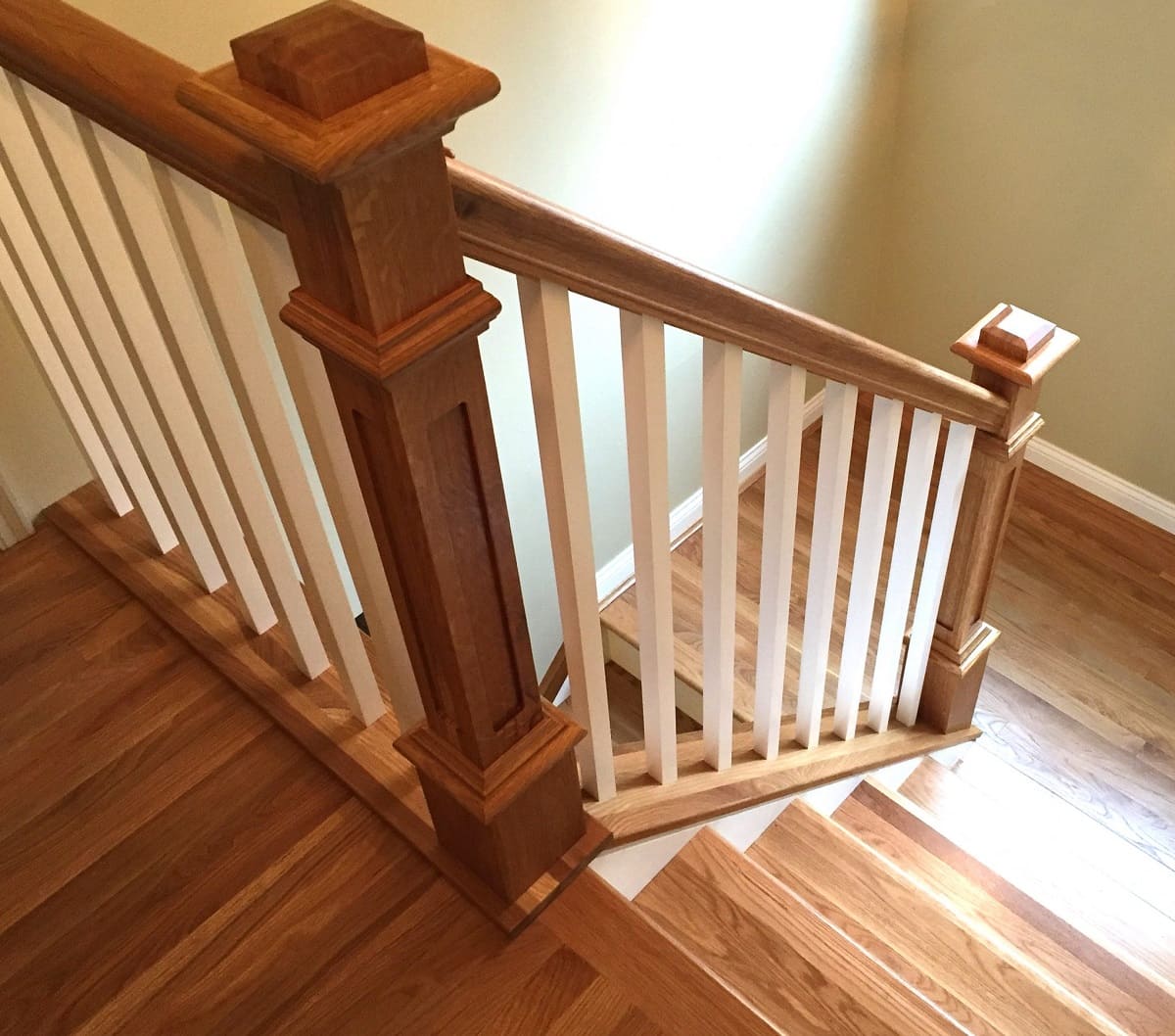



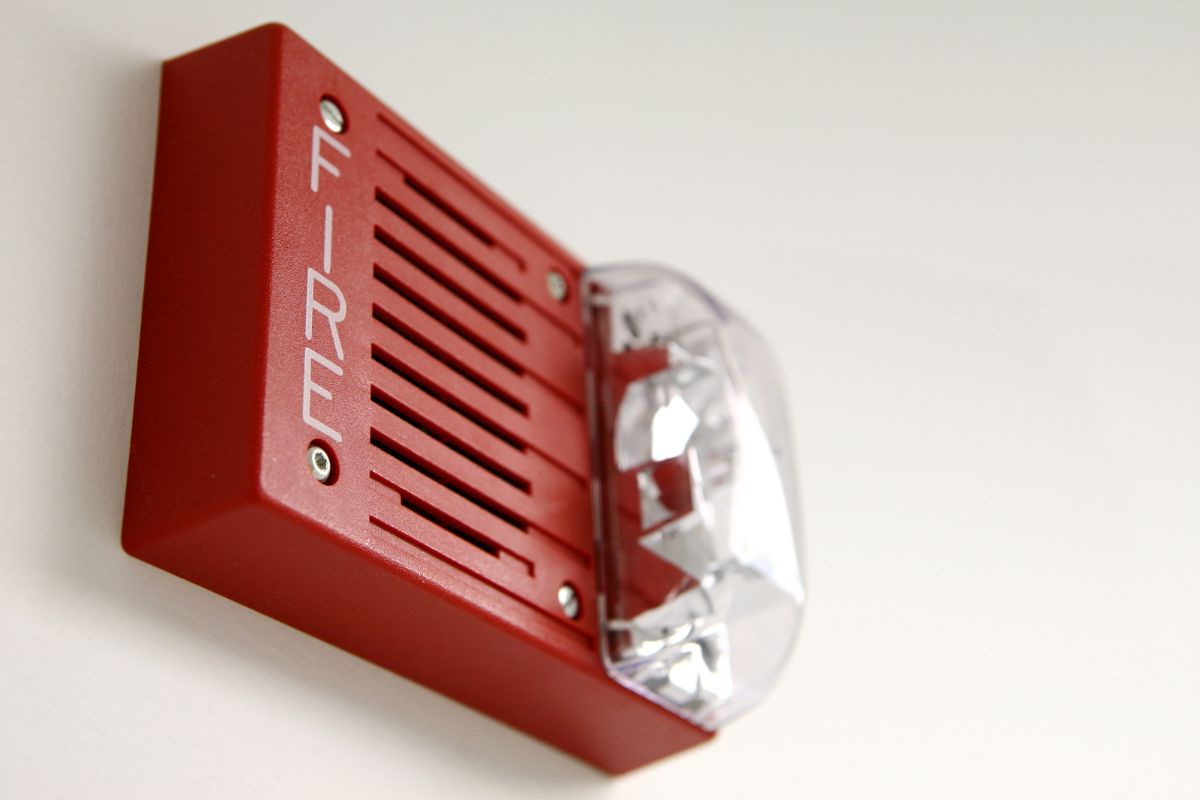
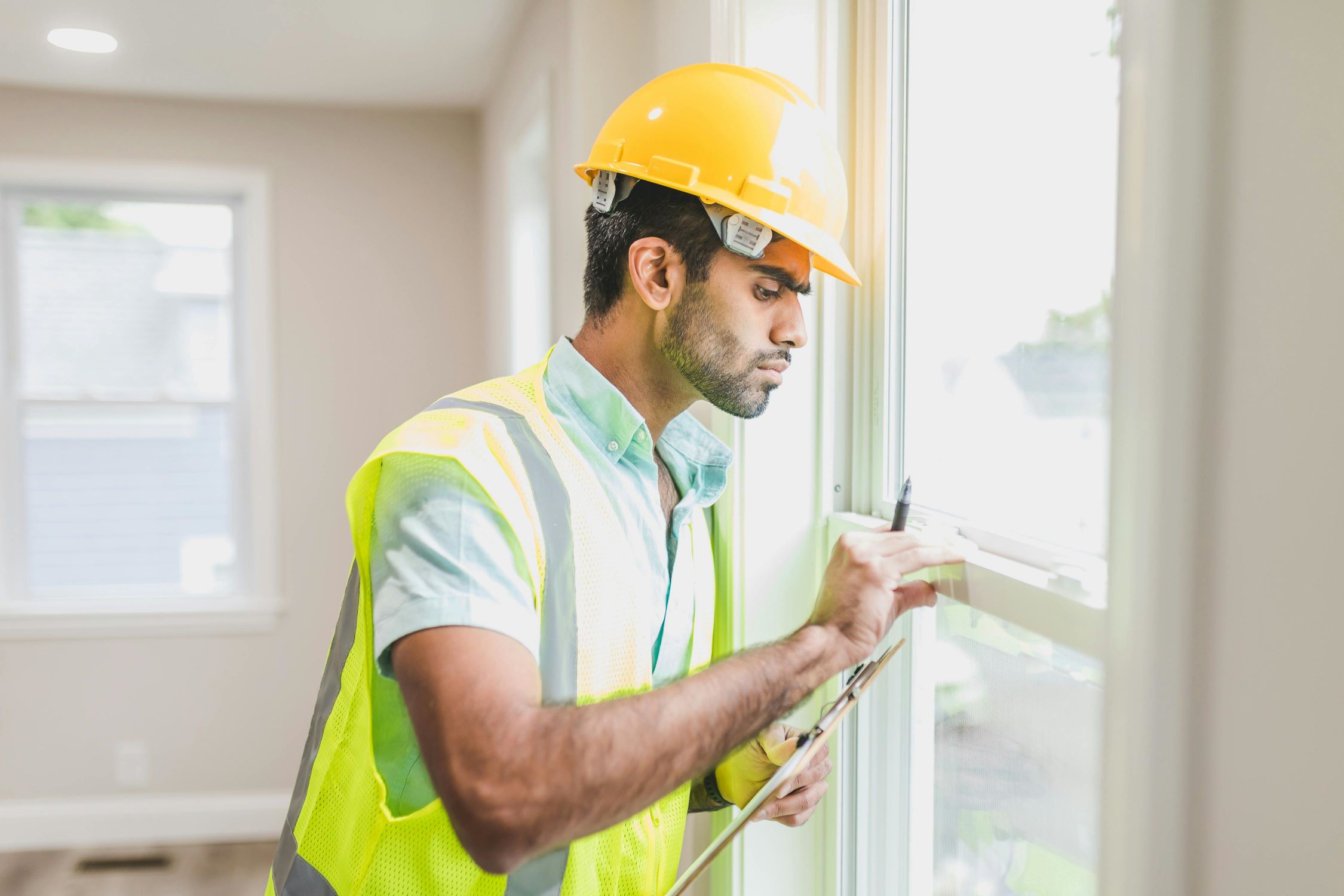

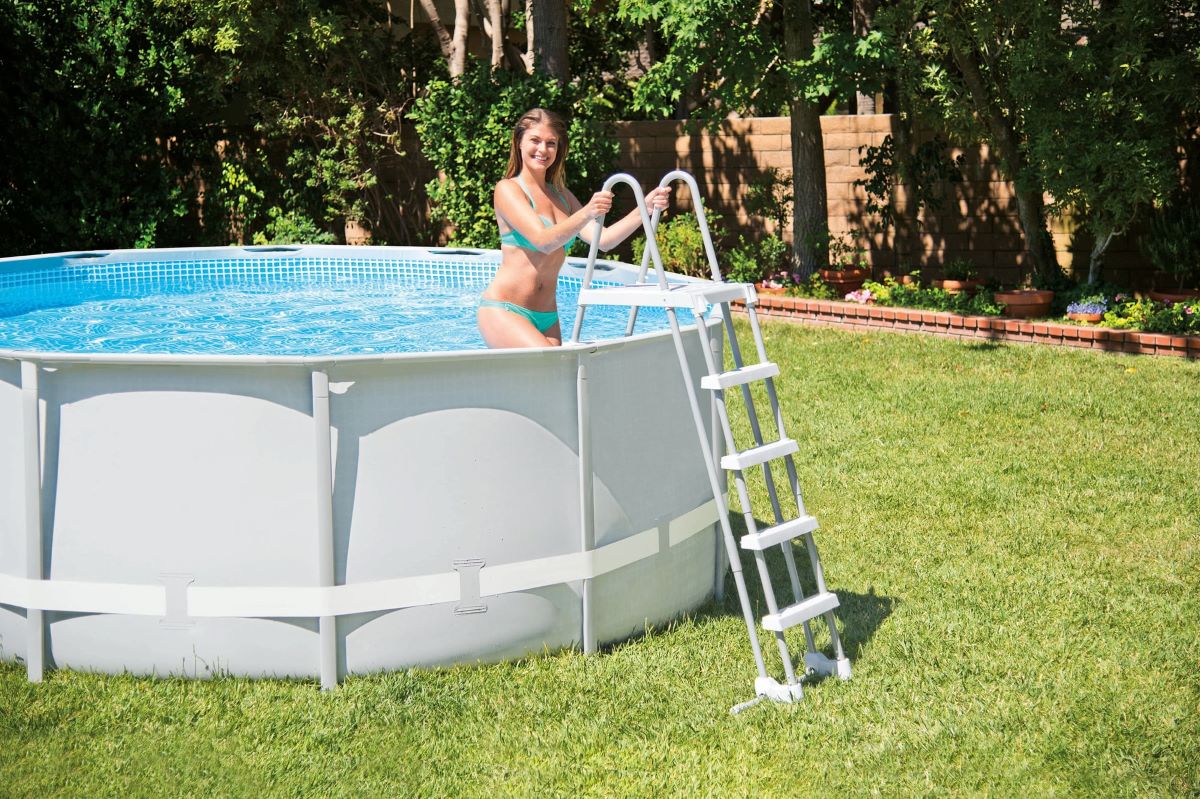

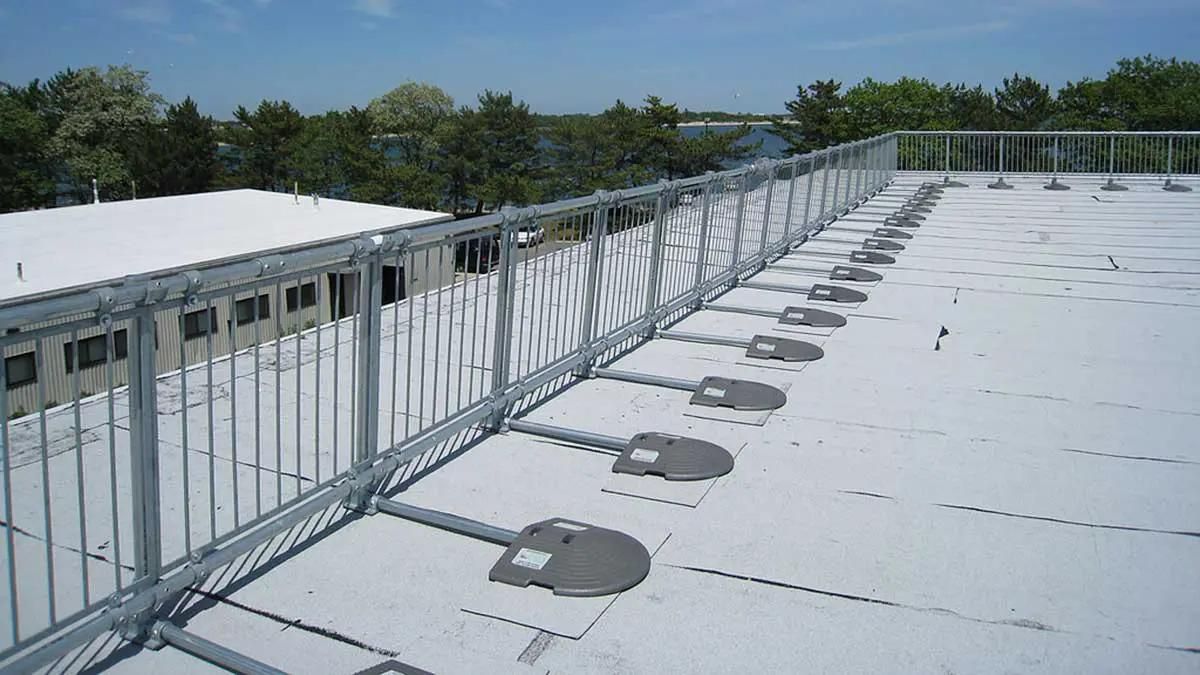




0 thoughts on “When Is Fall Protection Required On A Ladder”